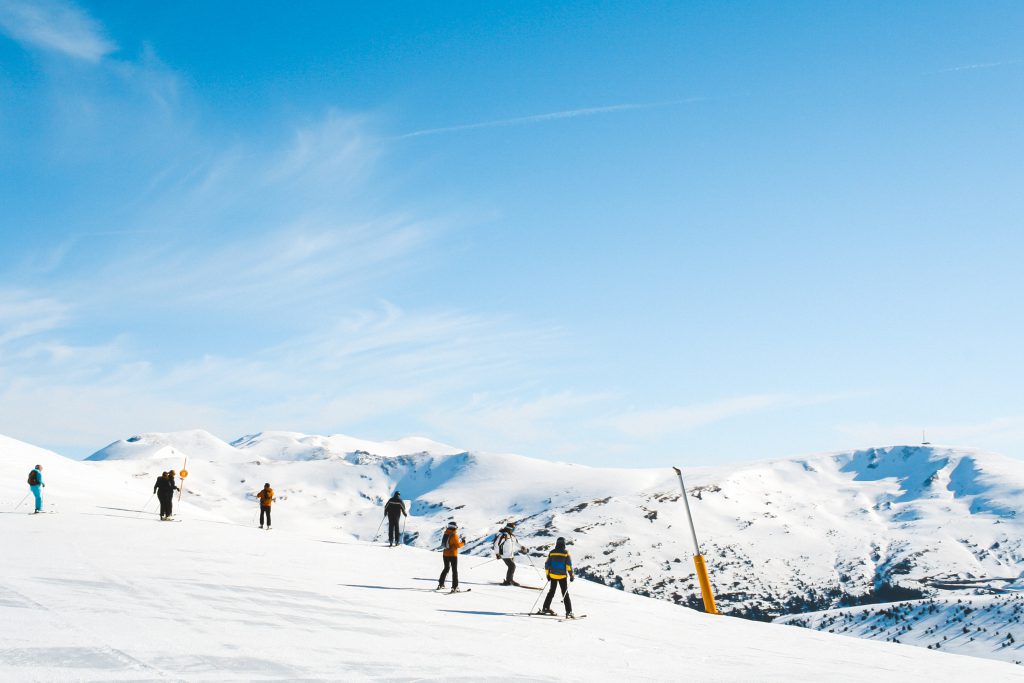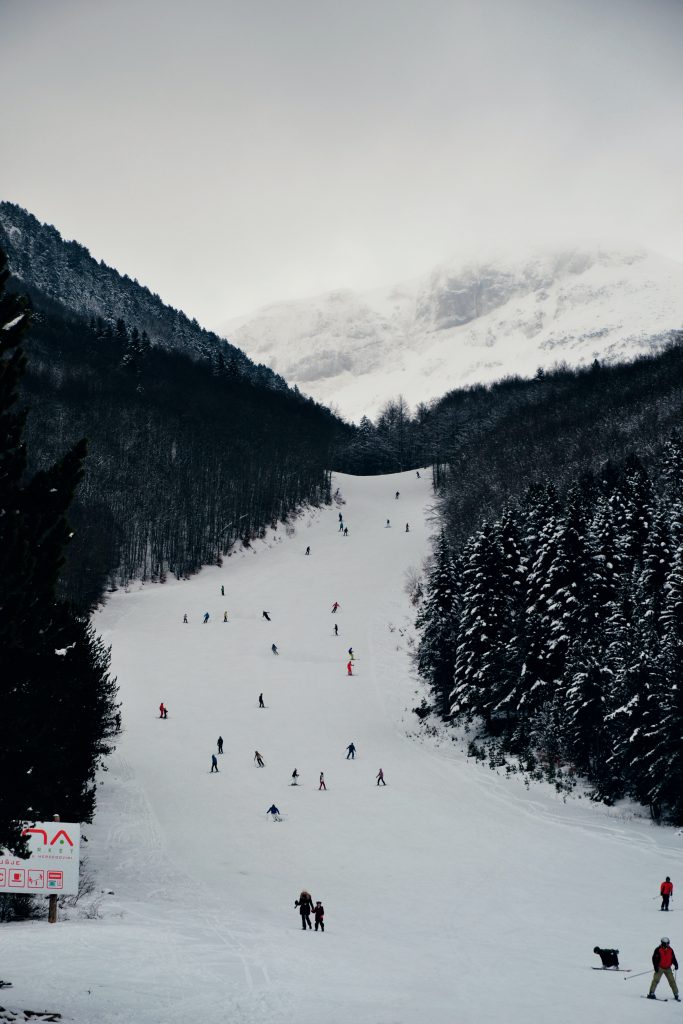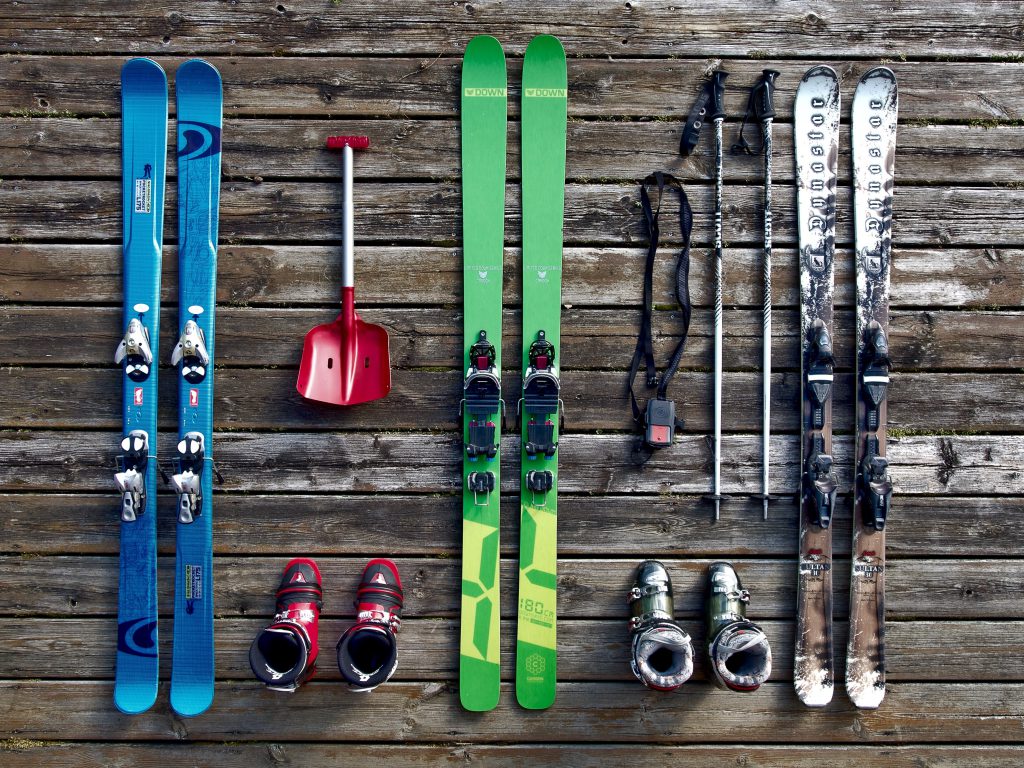Ready to Hit the Slopes? Here’s How You Can Prevent A Skiing Injury This Season
For some of us, winter is a season we look forward to every year. Not for the excuse to sip on hot chocolate, eat delicious bowls of chili, or cozy up next to a crackling fire, but for the once a year outdoor activities that come with it.
Is there a better feeling than gliding through fresh powdered snow with a picturesque mountainous background? Skiing is one of our favorite winter activities, and it’s probably safe to say it’s the same for many of you.
But as invigorating as skiing can be, it also comes with its risks. It’s estimated that about 600,000 people nationally are injured each year from skiing or snowboarding. And while you have to take into account that some of these accidents happen just from being on busy slopes, there are ways to keep your body in tip-top shape to prevent injuries.

4 of the Most Common Skiing Injuries
Medial collateral ligament tear
Knees are always a point of concern with this winter sport. Specifically because the nature of skiing involves movements that inevitably put a lot of pressure on them.
The medial collateral ligament is found on the inside of the knee and connects the ends of the knee bones together. Its main purpose is to keep the knee from bending fully inwards, maintaining proper alignment and functionality.
MCL tears can happen when an outside object or person hits the outside of the knee and pushes it inward (medially). With the unpredictability of skiing, it’s easy to see why this is a common injury.
Anterior collateral ligament tear
An ACL injury is by and large the most common sports injury, because sports involve rapid maneuvering. As with skiing, the sudden sharp turns have been known to cause ACL tears.
The ACL resides in the middle of the knee and controls how far the tibia can move in relation to the femur.
Similar to MCL injuries, large forces to the front or outer-front knee going backwards usually results in an ACL tear. Think about falling forward over your knee while your lower leg doesn’t move. The MCL is frequently torn along with the ACL when this happens, as the force is usually not coming from straight ahead. So, if the leg is fixed and a fall happens, you could see a double tear.
Wrist fracture
When you fall, it’s instinctual to put your hands or arms out to help cushion yourself. With skiing, you can imagine that putting all your body weight on your wrists, especially while moving at high speeds, has the potential to cause some serious damage to the ligaments.
It’s important to know how to brace yourself for a fall, using other parts of your body, so your wrists aren’t at high risk for injury.
Shoulder injuries
With a skiing fall, it’s easy to land on your shoulders. If one of the bones pops out of place, or the bone fractures, it can be extremely painful.
One of the injuries we see a lot is an AC joint sprain or tear. This injury occurs by falling on your outer shoulder, which can also result in a broken collar bone.
An AC joint injury can end up being quite severe, so you want to be sure to keep your shoulders as protected as possible.
Contributing Factors of Skiing Injury
Skiing injuries mostly result from fatigue, improper form, or pushing yourself too far — like going down a slope that’s too challenging for you.
Balance is also an important contributor to mention. The less stability and body awareness you have, the more prone you are to injury.

3 Ways You Can Prevent Injury
You want your body to feel good and be prepared to take on the slopes. Here are three ways you can help prevent a serious injury.
Dynamic warm-up before you start the day
A dynamic warm-up is a sequential series of movements before physical activity that are meant to increase blood flow to muscles, increase mobility, and get the body warmed up and ready for activity. Some dynamic exercises include walking lunges, walking on your heels, walking on your toes, and power skips. You’ll want to incorporate a few of these into your routine, prior to getting on the slopes, to make sure your muscles are awake and ready to go.
Stretch after hitting the slopes
When you’ve had a long day on the slopes and you’re tired and sore, stretching might be the last thing you want to do. We know this can be an easy step to skip, but it’s crucial to set aside a little time to do it. If you’re skiing for several days in a row, you’ll find that stretching can help you feel less sore in the hours and days to come.
We recommend using a foam or handheld roller to help loosen the muscles in your lower body and reduce muscle tension. Foam rolling before you stretch can help give you a deeper, better stretch. It’s also a good idea to take a hot shower before you stretch. The heat allows you to get the deepest stretches possible because of the increased blood flow and muscle warmth.
Work on muscle strength
There are plenty of ways to boost muscle strength before ski season, and our physical therapists at Physio can help. In our opinion, the best strengthening exercises to focus on are ones that target the glutes and lower legs. This helps prevent injury from falls by strengthening muscles for balance and helps you get back up easier even if you do fall. Try doing double leg squats, single leg squats, and plank exercises as a start.
Tips for Slope Safety
As physical therapists, there are a few other recommendations we have, aside from stretching and improving strength, to keep you safer on the slopes.

Tip #1
You’re going to be excited heading out for your first day on the slopes, but try not to do too much too soon. Instead, stay on runs that you’re comfortable with and gradually work your way up to more challenging terrain.
Tip #2
For a lot of skiers, some falls are unavoidable. Maybe you catch an edge with your ski or lose your balance? Learn how to fall correctly to avoid an injury, which means breaking the habit of putting your arms down to break your fall.
Tip #3
Last but not least, stay in tune with your body, and know when it’s time to call it a day. A lot of skiers end up getting injured because they push themselves to keep going when they are fatigued. Remember, it’s much better to end the day on a good note and return to the slopes when you’re feeling refreshed.
Ready to work with a physical therapist?
At Physio physical therapy, we can help immensely in keeping your body strong and at its best for ski season. Learn exercises to improve balance and muscle strength so you’re ready to take on the slopes. See what our physical therapists can do for you! Schedule an appointment.
